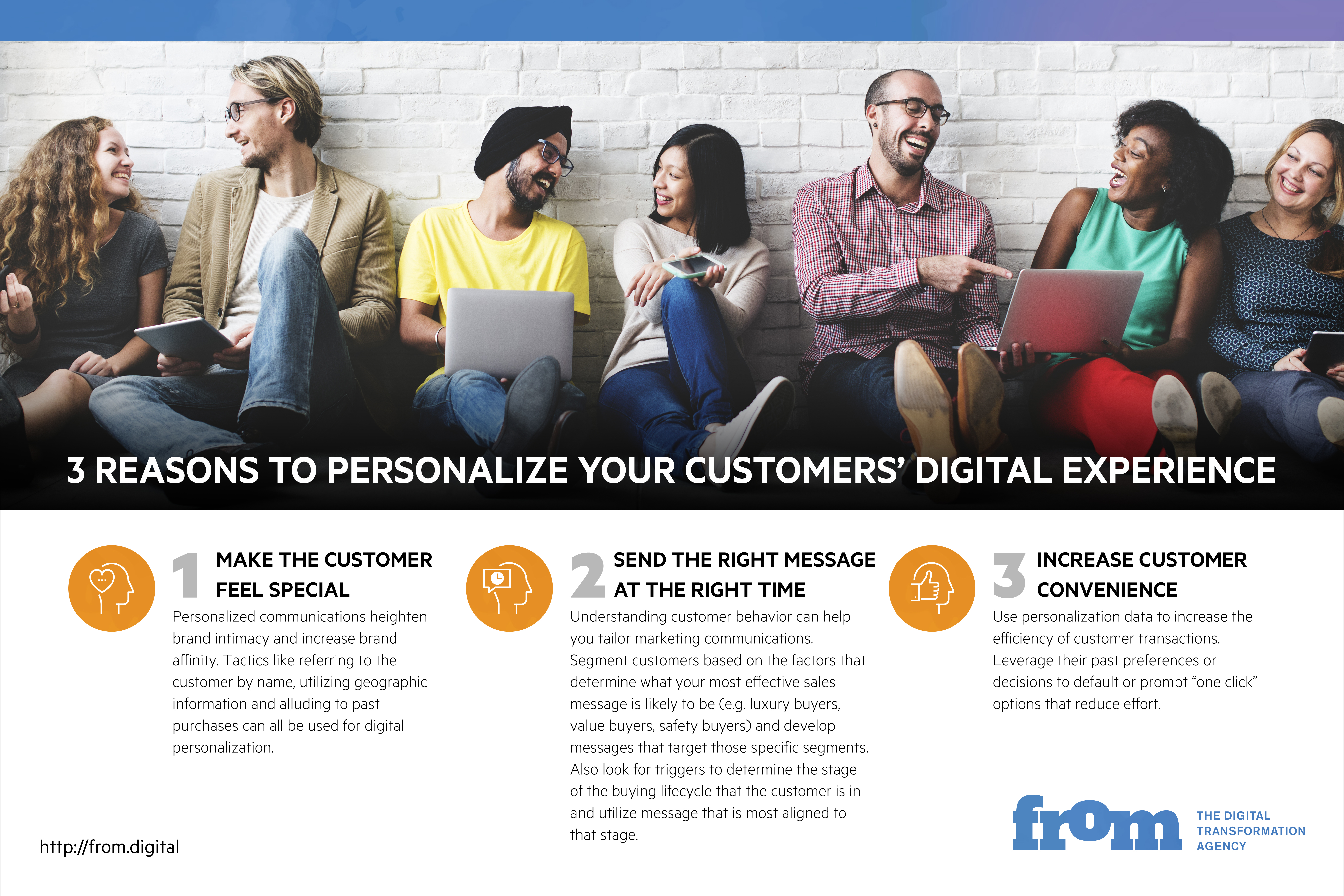Insights | By Howard Tiersky
3 Reasons to Personalize the Digital Experience
Marketers have been personalizing collateral and targeting discreet messages by segment for decades.
Marketers have been personalizing collateral and targeting discreet messages by segment for decades. The age of digital and “big data” gives us massive new tools in our arsenal to take this to another level. When planning the personalization of digital experience, there are so many alternatives and possibilities, each requiring investment and effort. It’s helpful to be able to step back and remember what we are trying to accomplish with the personalization of marketing experiences. You can use the framework below to help evaluate and prioritize the personalization possibilities to determine what will be most important for your brand and marketing objectives.
The three primary marketing benefits of creating a personalized experience are:

1. Making the Customer Feel Special
When Ritz Carlton places a hand-written personalized welcome card in your room before arrival, they do it to make you feel recognized and cared-for. When a direct mail piece contains the prospect’s name printed in the body copy of a sales letter, it makes the communication feel more personal, even though we know it’s done by automation. The primary benefits of these tactics are to heighten brand intimacy which creates increased affinity over time, as well as increase the response rate for email marketing and online conversion.
Key tactics:
- Refer to the customer by name, not just in the header but in the copy as well.
- Utilize other data elements such as the customer’s home town or gender to give a sense that you are speaking to them personally.
- Refer to past interactions to indicate you remember them specifically, such as “We hope you enjoyed your flight with us to Ft. Lauderdale last month!”
2. The Right Message at the Right Time
By utilizing what we know about the individual customer, we can be more persuasive as well as more helpful. For example, when marketing a vacation experience to a family with small children, very different product characteristics should be emphasized than when marketing that same experience to twenty-something single men. Good salespeople understand that the first step to engage to driving a customer’s behavior is understanding something about them so that you can tailor the sales message appropriately, and marketers can leverage customer data to achieve a similar result.
Key tactics:
- Segment customers by key distinctions in their purchase motivations and use customer research to clarify key purchase objections for each type of customer.
- Develop and test messaging that zero in on targeted communication by segment.
- Consider what triggers in the buying process might indicate when a customer is ready for a given type of message. For example, car buyers browsing financing information on a web site are clearly in a later stage of the purchase process than those who look at both convertibles and minivans in the same session.
3. Increasing Customer Convenience
We can use what we know about a customer to reduce their level-of-effort to transact with our business. When we allow a past customer to re-order a product with one-click, or remember a customer’s credit card number to avoid re-entry, we are creating a more efficient experience. But increased efficiency through personalization does not have to be limited to pre-existing customers. For example, when email marketing, you can recognize a specific user from your marketing list when they arrive on a landing page or commerce site and potentially pre-populate information (such as address) that you may already have in your database. Reducing a customer’s “level of effort” associated with saying “yes” to your offer can substantially increase conversion rates.
Key tactics:
- Observe customers using digital tools to make purchases so as to gain insight into what steps in the process involve the highest level of effort or most redundant activities. If the customer is entering information more than once, or entering information that you already have, these are good candidates for improvements.
- Consider whether there is more you can do to be sure you recognize customers when they connect to your digital channels. For example including PURLs (Personal Urls) in direct mail pieces allow a customer to enter a url like http://YourSite.com/Tiersky and be immediately recognized. You cant personalize an experience for a customer if you don’t know who they are.
- Saving credit card payment information for future use is highly motivating for repeat purchase as users especially hate having to re-enter their credit card digits. If you have concerns about data security, consider having this data stored by an ecommerce platform provider, rather than on your own servers.
Which of these three categories is the most important? What do you think? Most optimally, digital allows us to use them in concert to give a customer a “higher touch” experience at a fairly low level of additional effort. Take a look at your current personalization efforts. Do they address all these areas effectively? What more can you be doing with available data that would make your customer feel more special, target your message more effectively and make it easier for them to do business with you? Send us an email with your comments!





